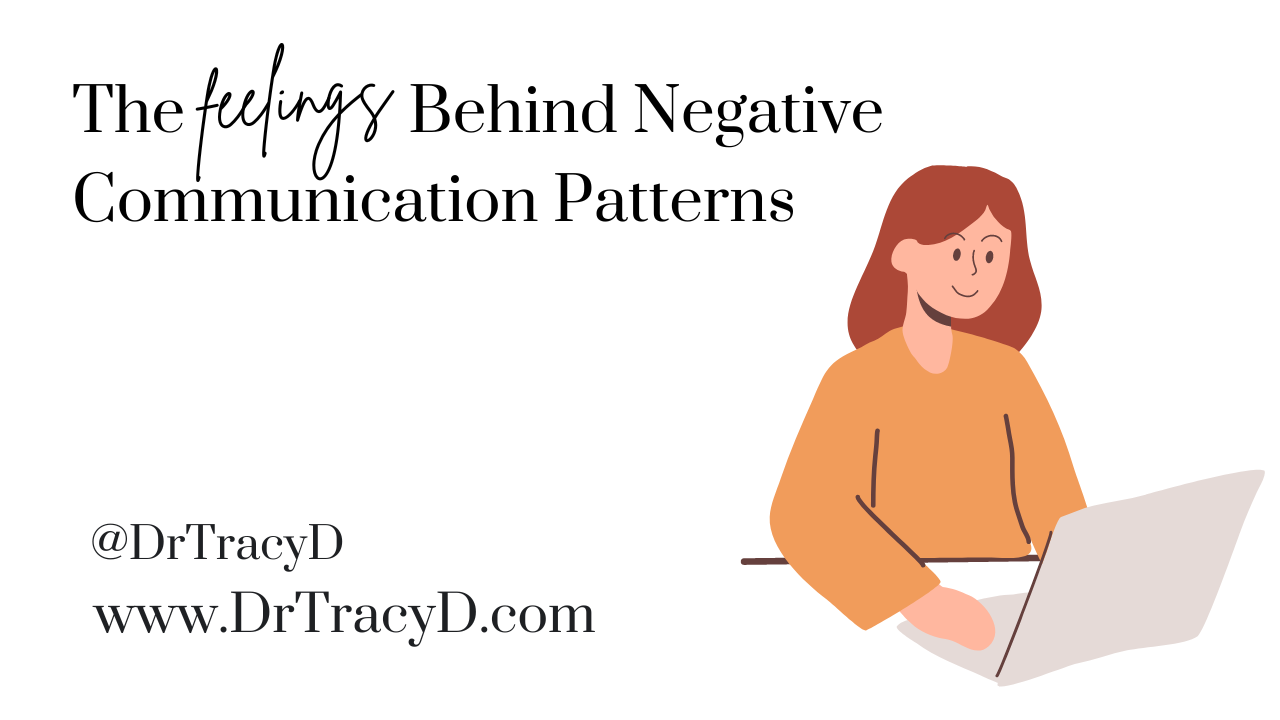The Feelings Behind Negative Communication Patterns

We know that negative communication patterns are the biggest barrier in our relationship and that they become a self-reinforced cycle, but what perpetuates the cycle?
If you don’t know what cycle you and your partner get stuck in, take my free quiz here. (Note, This is not a diagnostic tool but rather an educational tool)
There are four types of negative communication:
- Criticism/Blame
- Defensiveness
- Withdraw/Shutdown
- Contempt
These are what you want to keep an eye out for, as they’re likely signs that you’re in the throes of a negative communication cycle. Let’s break them down and take a look at what’s behind each type of behaviour.
1. Blame and Criticism:
Blame and criticism are deflection tools, used for self-preservation. It’s important to know that they are symptoms of anger and resentment. If you experience these difficult emotions often, know that you are not alone– it’s a common experience for the women in my community. These emotions suggest that you may not be communicating your feelings and needs to your partner, or you are not being heard in your relationship.
Prioritize: Expressing your needs clearly and holding healthy boundaries.
2. Defensiveness:
This is your response to defend yourself from a perceived attack. Notice I say perceived, as sometimes we are cued to be defensive even when we are not being attacked. Defensiveness says to your partner “I’m not the problem. It’s you.” This will stop you from resolving any issue.
Prioritize: Maintaining a teammate mentality. We’re not looking for right vs. wrong here– you’re on the same side.
3: Withdraw/Shutdown:
To withdraw or shut down means you stop communicating with your partner. This sends them the message that they are not important to you, and you do not care about the relationship enough to solve the issue at hand. When you shut down, it sends a panic signal to their brain, and their internal feelings of rejection and insecurity often emote externally as anger.
Prioritize: Vocalizing that you care about resolving this, and setting a specific time for when you’ll be emotionally and mentally ready to talk.
4. Contempt:
Hostile humour and denigrating comments towards your partner are classic signs of contempt. Often initially fueled by criticism, this type of communication pattern puts the other person down and is insidious. There is a breakdown of security and healthy connection in the relationship.
Prioritize: Using respect when communicating with your partner, and finding compassion for both you and them.
Recognizing your go-to patterns in communication is an important first step in changing how you are feeling with your partner. Remember this: Only you can control how you communicate to your loved one.
Warmly,
Dr. Tracy




